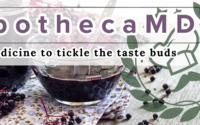Bicarbonates and carbonates as antioxidants in vegetable oils at frying temperatures
J Food Sci. 2022 Dec 28. doi: 10.1111/1750-3841.16442. Online ahead of print.
ABSTRACT
Antioxidant activity of bicarbonates and carbonates including NaHCO3 , Na2 CO3 , KHCO3 , and K2 CO3 was evaluated in soybean oil (SBO) at 180°C. KHCO3 and K2 CO3 had stronger activity than NaHCO3 and Na2 CO3 . KHCO3 (5.5 mEq/L, 0.060 wt.%) and K2 CO3 (5.5 mEq/L, 0.041 wt.%) were more effective than 0.02 wt.% tert-butylhydroquinone (TBHQ) in preventing oxidation of SBO. While the antioxidant activity of KHCO3 and K2 CO3 increased with increasing their concentrations up to 5.5 mEq/L, it decreased at 11 mEq/L. KHCO3 and K2 CO3 were also effective in preventing oxidation of other vegetable oils including avocado, canola, corn, high oleic soybean, and olive oils. Correlation tests conducted with the results from the six oils showed that KHCO3 and K2 CO3 had weak to moderate positive correlations with γ- and δ-tocopherols. In a separate study in stripped SBO, it was found that KHCO3 had a synergistic effect with α-tocopherol, but not with γ- and δ-tocopherols. KHCO3 had additive or synergistic effect with rosemary extract, epigallocatechin gallate, ascorbic acid, and ascorbyl palmitate. Antioxidant activity of KHCO3 was confirmed in frying of potato cubes in SBO and canola oil. Although more studies should be conducted for better understanding of the mechanisms and factors affecting the antioxidant activity of bicarbonates and carbonates, this study demonstrated that they could serve as antioxidants or co-antioxidants of other antioxidants in frying. PRACTICAL APPLICATION: Inorganic salts including NaHCO3 , KHCO3 , Na2 CO3 , and K2 CO3 hadstrong antioxidant activity in vegetable oils at frying temperatures when they wereadded as powder. Antioxidant activity of 0.06 wt.% KHCO3 was higherthan that of 0.02 wt.% TBHQ in soybean oil and canola oil during frying potato. KHCO3 had additive orsynergistic effect with rosemary extract, epigallocatechin gallate, ascorbicacid, and ascorbyl palmitate indicating that these inorganic salts can be usedas co-antioxidants to enhance the antioxidant activity of existing antioxidantswhile they can be used alone as well.
PMID:36576154 | DOI:10.1111/1750-3841.16442

